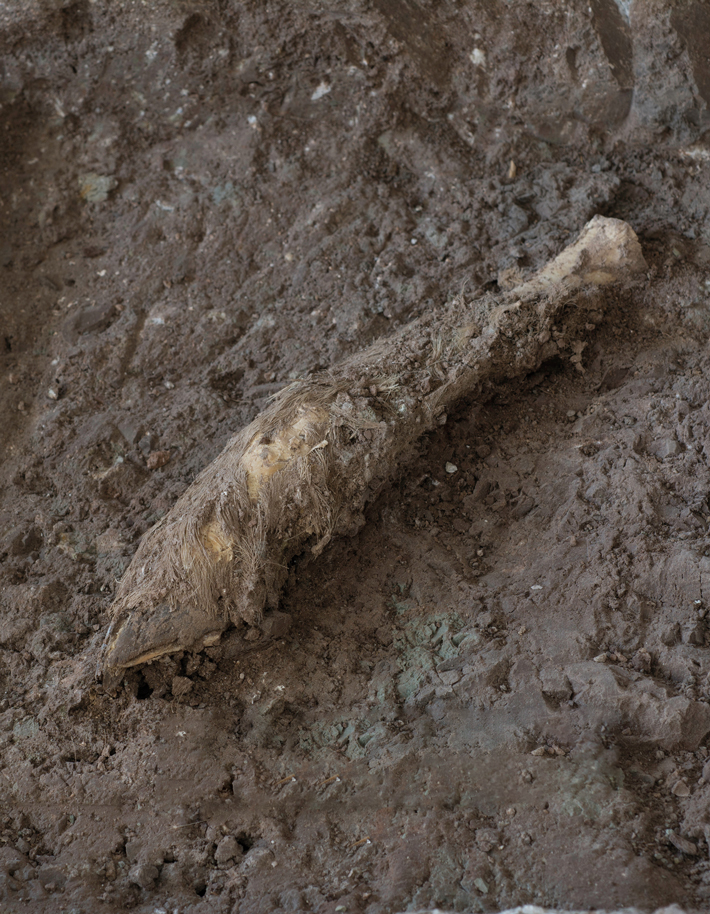Salty Snack
November/December 2021

 Beginning sometime between the sixth and fourth centuries B.C. and continuing up until the late twentieth century A.D., members of rural communities sporadically worked the Chehrabad salt mine in northwestern Iran. Since 1993, archaeologists have uncovered the remains of eight ancient miners whose bodies were mummified by the mine’s salt-rich and low-moisture environment, along with mummified animal remains, including a sheep’s leg that was discarded some 1,600 years ago. “The mine’s extremely dry conditions quickly desiccated the sheep’s soft tissue,” says Trinity College Dublin geneticist Conor Rossi. “Its DNA was extremely well preserved.”
Beginning sometime between the sixth and fourth centuries B.C. and continuing up until the late twentieth century A.D., members of rural communities sporadically worked the Chehrabad salt mine in northwestern Iran. Since 1993, archaeologists have uncovered the remains of eight ancient miners whose bodies were mummified by the mine’s salt-rich and low-moisture environment, along with mummified animal remains, including a sheep’s leg that was discarded some 1,600 years ago. “The mine’s extremely dry conditions quickly desiccated the sheep’s soft tissue,” says Trinity College Dublin geneticist Conor Rossi. “Its DNA was extremely well preserved.”
Examining the sheep’s DNA has allowed Rossi and his colleagues to envision what the animal looked like. The scientists identified a gene associated with a fat tail, a characteristic still present in sheep raised for their meat in the area today. They also determined that the sheep did not have the genetic mutation associated with woolly fleece, which was an important commodity starting in the mid-to late fourth millennium B.C. Scanning electron microscopy of hair fibers preserved on the animal’s leg confirmed that this particular sheep likely had a hairy rather than a woolly coat. Given these traits, the researchers believe ancient miners consumed the sheep for its meat. Says Rossi, “This sample builds up a bigger story about how ancient people used specialized breeds of animals in thoughtful ways.”